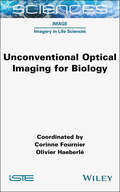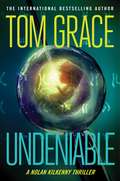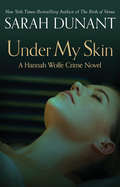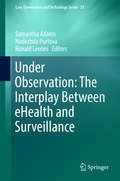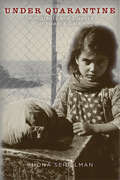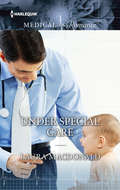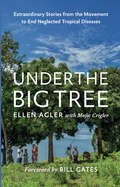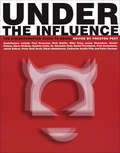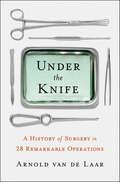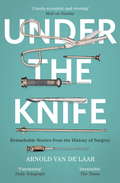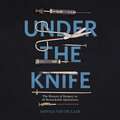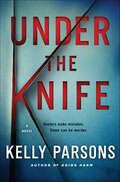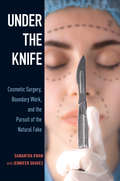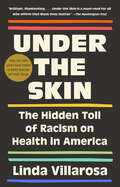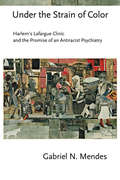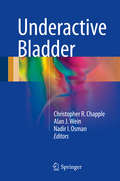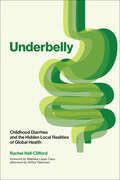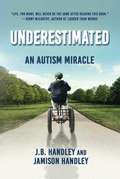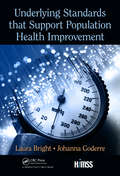- Table View
- List View
Unconventional Optical Imaging for Biology
by Corinne Fournier Olivier HaeberléOptical imaging of biological systems has undergone spectacular development in recent years, producing a quantity and a quality of information that, just twenty years ago, could only be dreamed of by physicists, biologists and physicians. Unconventional imaging systems provide access to physical quantities – phase, absorption, optical index, the polarization property of a wave or the chemical composition of an object – not accessible to conventional measurement systems. To achieve this, these systems use special optical setups and specific digital image processing to reconstruct physical quantities. This field is also known as computational imaging. This book presents various non-conventional imaging modalities developed for the biomedical field: wave front analysis imaging, digital holography/tomography, optical nanoscopy, endoscopy and singlesensor imaging. Experimental setups and reconstruction algorithms are presented for each modality.
Uncovering Critical Personalism: Readings from William Stern’s Contributions to Scientific Psychology (Palgrave Studies in the Theory and History of Psychology)
by James T. LamiellThis book brings together the central tenets of William Stern’s critical personalism. Presented for the first time for an English-speaking audience, this selection of original translations and essays encapsulates the critical framework of Stern’s personalistic psychology. The selected works highlight the philosophical basis of Stern’s personalistic views, illustrate their relevance in domains of theoretical and practical importance in psychology, and reveal Stern’s critical stance on certain methodological trends that were gaining favor within psychology during his lifetime. Lamiell’s own chapters contextualise the translations by providing an overview of the most basic tenets of critical personalism, and offering a commentary on paradigmatic commitments within scientific psychology’s mainstream that began to impede Stern’s efforts prior to his death, and that remain obstacles to personalistic thinking in the discipline today. Largely ignored by his contemporaries, this work forms part of an emerging body of scholarship that seeks to reintroduce Stern’s thinking into contemporary psychology. The book is intended for academically oriented scholars with interests in historical, theoretical and philosophical issues in psychology.
Und jetzt Sie! – Selbst- und Zeitmanagement in Gesundheitsberufen: Selbst- Und Zeitmanagement In Gesundheitsberufen (Top im Gesundheitsjob)
by German Quernheim Claudia StyrskySie können mehr als Sie denken! „Arbeitsverdichtung" findet überall statt. Da bilden auch und vor allem die Gesundheitsfachberufe keine Ausnahme. Aber die Beschäftigten haben es stets mit kranken Menschen und deren Bedürfnisse zu tun. Wie also schafft man den Spagat zwischen den eigenen und den Bedürfnissen der anderen? Doch statt vor den eigenen und den fremden Ansprüchen zu kapitulieren, kann man sein "Schicksal" selbst in die Hand nehmen und die eigenen Ressourcen für sich nutzen. Selbstmanagement heißt die Devise! Anhand von Beispielen aus dem Alltag gibt der Autor German Quernheim zahlreiche Tipps und Tricks: knapp, humorvoll und umsetzbar. Mit zahlreichen Selbsttests, Übungen und Trainingsprogrammen.
Undeniable (Nolan Kilkenny #6)
by Tom GraceEx-Navy SEAL Nolan Kilkenny receives a desperate plea for help from doctors frantic to save the life of a young boy with a deadly genetic disorder. The boy, who came to his parents through a blind adoption, has no known blood relatives. Nolan agrees to help, but as he is being prepped for surgery, the boy dies. Further genetic testing then reveals an astonishing truth: Nolan and the boy share the same biological father. Nolan must confront his own father to find out the truth behind the discovery, and uncovers a heinous blackmail plot and desperate victims and villains. <p><p> Undeniable, the sixth Nolan Kilkenny thriller from international bestselling author Tom Grace, takes Nolan into the brave new world of reproductive technology, where the building blocks of life are manipulated in a Petri dish, women lease their wombs like rental properties, and money trumps morality. In an age of rapid advances in human genetics, cloning and stem cell research, what seemed impossible just a few years ago is now a reality. DNA has been reduced from a miraculous molecule into a data storage device, and the information it contains is as easy to hack as any computer file. Undeniable is a novel that steps beyond the traditional parent-child relationship into a chilling new reproductive reality. Undeniable, the sixth Nolan Kilkenny thriller from international bestselling author Tom Grace, takes Nolan into the brave new world of reproductive technology, where the building blocks of life are manipulated in a Petri dish, women lease their wombs like rental properties, and money trumps morality. In an age of rapid advances in human genetics, cloning and stem cell research, what seemed impossible just a few years ago is now a reality. DNA has been reduced from a miraculous molecule into a data storage device, and the information it contains is as easy to hack as any computer file. Undeniable is a novel that steps beyond the traditional parent-child relationship into a chilling new reproductive reality.
Undeniable Trait
by J.S. MarloHoping to start afresh, Dr. Zachary Auckerman moves to a northern Canadian town in desperate need of a doctor. Within days of his arrival, he stumbles onto suspicious deaths and illegal activities at the nursing home, and encounters a fascinating female plumber with a spunky personality and six fingers on her left hand. The murder of her mother, a woman who seduced and extorted men, prompts Willow to dig into her past and seek her father's identity, but the secrets surrounding her birth are buried deep in old medical files and locked in the ravaged mind of her grandmother who lives at the nursing home. Amid rumors, lies, deceit, and betrayal, Willow and Zachary hunt for the truth, unleashing deadly events that threaten their lives. Can they trust their hearts, and each other, before one of them becomes the next victim?
Under My Skin: A Hannah Wolfe Mystery (The Hannah Wolfe Crime Novels #3)
by Sarah DunantA private eye infiltrates a health spa in this witty crime novel from the CWA Silver Dagger Award–winning author of The Birth of Venus Dead carp floating in the Jacuzzi isn&’t the latest youth and beauty elixir for the elite patrons of Castle Dean spa, and owner Olivia Marchant is desperate to find the culprit before she loses all her clients. London PI Hannah Wolfe is plucked, crimped, steamed, and oiled while trying to uncover a spiteful saboteur who isn&’t above putting maggots in the yogurt and nails in the massage heads. Olivia also wants the sleuth to look into a series of threatening notes someone has been sending her husband, Maurice. Celebrity plastic surgeon Maurice Marchant has left some very disgruntled former patients in his wake. Women who have gone under his knife are now coping with less-than-perfect liposuction, drooping faces, and breast enlargements that went south. And when the case morphs into murder, Hannah confronts an embarrassment of suspects with means, motive, and opportunity. Tracking a killer while running surveillance on her sister&’s potentially philandering husband takes Hannah out of her comfort zone and into a rarefied world where appearances aren&’t just deceiving—they&’re deadly. The quest for beauty is taken to diabolical lengths in this smart thriller from New York Times–bestselling author Sarah Dunant—a must-read for fans of Kinsey Millhone and Philip Marlowe. Under My Skin is the 3rd book in the Hannah Wolfe Crime Novels, but you may enjoy reading the series in any order.
Under Observation: The Interplay Between eHealth and Surveillance
by Ronald Leenes Samantha Adams Nadezhda PurtovaThe essays in this book clarify the technical, legal, ethical, and social aspects of the interaction between eHealth technologies and surveillance practices. The book starts out by presenting a theoretical framework on eHealth and surveillance, followed by an introduction to the various ideas on eHealth and surveillance explored in the subsequent chapters. Issues addressed in the chapters include privacy and data protection, social acceptance of eHealth, cost-effective and innovative healthcare, as well as the privacy aspects of employee wellness programs using eHealth, the use of mobile health app data by insurance companies, advertising industry and law enforcement, and the ethics of Big Data use in healthcare. A closing chapter draws on the previous content to explore the notion that people are 'under observation', bringing together two hitherto unrelated streams of scholarship interested in observation: eHealth and surveillance studies. In short, the book represents a first essential step towards cross-fertilization and offers new insights into the legal, ethical and social significance of being 'under observation'.
Under Our Roof: A Son's Battle for Recovery, a Mother's Battle for Her Son
by Madeleine Dean Harry CunnaneA congresswoman and her son reveal how he survived a ten-year battle with opioid abuse—and what their family&’s journey to recovery can teach us about finding hope amid the unspeakable.When Madeleine Dean discovered that her son Harry was stealing from the family to feed a painkiller addiction, she was days away from taking the biggest risk of her life: running for statewide office in Pennsylvania. For years, she had sensed something was wrong. Harry was losing weight and losing friends. He had lost the brightness in his eyes and voice, changing from a young boy with boundless enthusiasm to a shadow of himself, chasing something she could not see. Now her worst fears had come to light. Under Our Roof is the story of a national crisis suffered in the intimacy of so many homes, told with incredible candor through the dual perspectives of a mother rising in politics and a son living a double life, afraid of what might happen if his secret is exposed. In this honest, bracing, yet ultimately uplifting memoir, they discuss the patterns of a family dealing with an unspoken disease, the fear that keeps addicts hiding in shame, and the moments of honesty, faith, and personal insight that led to Harry&’s recovery. In a country searching for answers to the devastating effects of opioids and drug abuse, Under Our Roof is a ray of hope in the darkness. It is not only a love story between mother and son but also an honest account of a pressing national crisis by a family poised to make a difference.
Under Quarantine: Immigrants and Disease at Israel’s Gate
by Rhona SeidelmanUnder Quarantine is the riveting story of Shaar Ha’aliya, a central immigrant processing camp opened shortly after Israel became an independent state. This historic gateway for Jewish migration was surrounded by a controversial barbed wire fence. The camp administrators defended this imposing barrier as a necessary quarantine measure - even as detained immigrants regularly defied it by crawling out of the camp and returning at will. Focusing on the conflicts and complications surrounding the medical quarantine, this book brings the history of this place and the remarkable experiences of the immigrants who went through it to life. Evocative and bold, Under Quarantine shows that we cannot fully understand Israel until we understand Shaar Ha’aliya. The gate of arrival for nearly half a million immigrants - a space of homecoming, conflict, exclusion and welcoming - here was the country’s crucible.
Under Special Care
by Laura MacdonaldA year ago mutual attraction flared between Sister Louise Keating and Dr. Matt Forrester, and a whirlwind marriage soon followed. But finding time for each other in their busy work schedules proved impossible, and they separated. Now they're working together again in the special-care baby unit. As the lives of their tiny patients hang constantly in the balance, Louise and Matt ride a roller coaster of emotions that takes them to a new level of intimacy. The question is, as they heal these fragile babies, can they also heal their marriage — with a little special care?
Under the Big Tree: Extraordinary Stories from the Movement to End Neglected Tropical Diseases
by Mojie Crigler Ellen AglerPowerful stories of the debilitating effects of neglected tropical diseases throughout the world, highlighting the successes and challenges of those fighting to eliminate them.Neglected tropical diseases (NTDs) affect over one billion of the world's poorest people. More than 170,000 people die from NTDs each year, and many more suffer from blindness, disability, disfigurement, cognitive impairment, and stunted growth. Yet NTDs are treatable and preventable, and the annual cost of treatment is incredibly low.In Under the Big Tree, public health leader Ellen Agler and award-winning writer Mojie Crigler tell the moving stories of those struggling with these diseases and the life-saving work that can be—and has been—done to combat NTDs. They introduce readers to people from all walks of life—from car washers in Lake Victoria and surgeons on motorbikes to under-resourced local nongovernmental organizations (NGOs) and Big Pharma scientists—as they chronicle what has been called the largest public health program in the world. On the one hand, the solutions are simple: deliver medication to people who need it and leverage local systems to offer prevention, treatment, and education. On the other hand, solutions are complex: navigating local and national politics, delivering treatment to some of the most remote, vulnerable communities, and coordinating global and local donors, international NGOs, thousands of health workers, and millions of citizens. Drawing on interviews with major players in the NTD world who share their cutting-edge research and frontline experiences, Under the Big Tree is a moving introduction to the science, the tactics, and the partnerships working to address these terrible diseases that affect the most vulnerable people in the world. With a foreword by Bill Gates, this book fascinates, inspires, and gives readers concrete steps for further engagement.
Under the Gaze of Global Mental Health: A Critical Reflection (The Politics of Mental Health and Illness)
by Janaka Jayawickrama Jerome WrightThis book critically examines how the globalisation of mental health through the dominant medical model has created barriers to understanding and responding to distress with reference to cases from Malawi and Sri Lanka. Its authors argue that mental health must be understood within the overall health of an individual, and individual health is located within the social, political, cultural, economic, and environmental context in which they live. Their analyses demonstrate that supplanting locally developed responses to distress with a Western medicalised model of mental health inhibits a meaningful engagement with individuals and communities in need of care. Further, they argue that this &‘supplanting&’ is analogous with a colonial endeavour, and one which diverts attention from the real problems of development. Across contexts the book highlights the difficulties that mental health professionals face in facilitating individuals&’ capacities within structurally damaging socio-economic environments and increasingly commercially orientated health systems. This book will appeal in particular to students, researchers and practitioners working across the fields of mental health, medical anthropology, social work, and health and development studies.
Under the Influence: The Disinformation Guide to Drugs (Disinformation Books)
by Preston PeetThis myth-busting anthology cuts through the propaganda to tell the true story of drug use, abuse, and the costly war on friends, families and communities. Author and regular High Times contributor Preston Peet assembles an all-star cast of writers to shine a harsh light on the misinformation peddled by prohibitionists who profit from the War on Some Drugs and Users. Despite the anti-drug hysteria, drugs have been an integral aspect of human life for thousands of years. They cure diseases, ease pain, enhance intelligence, calm nerves, open the doors of perception and alter consciousness. Yet, even with the easing of marijuana restrictions, the War on Some Drugs and Users continues to persecute huge swaths of the population. The reasons why can be found in Under the Influence. The decades and trillions of dollars spent waging war on neighbors, friends and families have done nothing to eradicate drug use and abuse, but they have succeeded in overthrowing governments, tearing apart families and communities, and ensured the rise of international criminal cartels. Under the Influence explains how we came to this state of affairs and how we can bring about real reform. Contributors include Tom Robbins, Paul Krassner, Rick Doblin, Mike Gray, Lonny Shavelson, Daniel Forbes, Steve Wishnia, Cynthia Cotts, Russ Kick, Dr. Stanislav Grof, Daniel Pinchbeck, Paul Armentano, Jacob Sullum, Peter Dale Scott and Robert Anton Wilson.
Under the Knife: A History of Surgery in 28 Remarkable Operations
by Arnold van de LaarSurgeon Arnold van de Laar uses his own experience and expertise to tell this engrossing history of surgery through 28 famous operations—from Louis XIV and Einstein to JFK and Houdini.From the story of the desperate man from seventeenth-century Amsterdam who grimly cut a stone out of his own bladder to Bob Marley's deadly toe, Under the Knife offers a wealth of fascinating and unforgettable insights into medicine and history via the operating room.What happens during an operation? How does the human body respond to being attacked by a knife, a bacterium, a cancer cell or a bullet? And, as medical advances continuously push the boundaries of what medicine can cure, what are the limits of surgery?With stories spanning the dark centuries of bloodletting and amputations without anaesthetic through today's sterile, high-tech operating rooms, Under the Knife is both a rich cultural history, and a modern anatomy class for us all.
Under the Knife: A History of Surgery in 28 Remarkable Operations
by Arnold van Laar'This is history with a surgeon's touch: deft, incisive and sometimes excruciatingly bloody' The Sunday Times'Utterly eccentric and riveting' Mail on Sunday 'Eye-opening and, frequently, eye-watering . . . a book that invites readers to peer up the bottoms of kings, into the souls of rock stars and down the ear canals of astronauts' The Daily TelegraphHow did a decision made in the operating theatre spark hundreds of conspiracy theories about JFK? How did a backstage joke prove fatal to world-famous escape artist Harry Houdini? How did Queen Victoria change the course of surgical history?Through dark centuries of bloodletting and of amputations without anaesthetic to today's sterile, high-tech operating theatres, surgeon Arnold van de Laar uses his experience and expertise to tell an incisive history of the past, present and future of surgery.From the dark centuries of bloodletting and of amputations without anaesthetic to today's sterile, high-tech operating theatres, Under the Knife is both a rich cultural history, and a modern anatomy class for us all.
Under the Knife: A History of Surgery in 28 Remarkable Operations
by Arnold van LaarThe history of surgery in 28 famous operations - from Louis XIV to JFK, and from Einstein to Houdini.In Under the Knife, surgeon Arnold Van de Laar uses his own experience and expertise to tell the witty history of the past, present and future of surgery.From the story of the desperate man from seventeenth-century Amsterdam who grimly cut a stone out of his own bladder to Bob Marley's deadly toe infection, Under the Knife offers all kinds of fascinating and unforgettable insights into medicine and history via the operating theatre.What happens during an operation? How does the human body respond to being attacked by a knife, a bacterium, a cancer cell or a bullet? And, as medical advances continuously push the boundaries of what medicine can cure, what are the limits of surgery?From the dark centuries of bloodletting and of amputations without anaesthetic to today's sterile, high-tech operating theatres, Under the Knife is both a rich cultural history, and a modern anatomy class for us all.(P)2018 Hodder & Stoughton Limited
Under the Knife: A Novel
by Kelly ParsonsBiotechnology tycoon Morgan Finney is highly intelligent but shy and emotionally fragile. When his beloved wife Jenny dies of complications during a surgery led by Dr. Rita Wu, Finney’s grief turns to rage. He vows to kill Rita just as he believes she killed his wife. But first he will systematically destroy her life. He will take what is precious to her just as she did to him. Aided by a mysterious man, Finney uses advanced medical technology to ruin Rita’s reputation and bring her to the brink of madness. Alone, fighting for her sanity and life, Rita reaches out to her to former lover, Dr. Spencer Cameron, for help. Together they must fight to uncover Finney’s horrific intentions and race to stop him before it’s too late.Terrifying and captivating, Kelly Parsons's Under the Knife is a heart pounding thriller that will have readers on the edge of their seats up to the very last page.
Under the Knife: Cosmetic Surgery, Boundary Work, and the Pursuit of the Natural Fake
by Samantha Kwan Jennifer GravesMost women who elect to have cosmetic surgery want a “natural” outcome—a discrete alteration of the body that appears unaltered. Under the Knife examines this theme in light of a cultural paradox. Whereas women are encouraged to improve their appearance, there is also a stigma associated with those who do so via surgery. Samantha Kwan and Jennifer Graves reveal how women negotiate their “unnatural”—but hopefully (in their view) natural-looking—surgically-altered bodies. Based on in-depth interviews with 46 women who underwent cosmetic surgery to enhance their appearance, the authors investigate motivations for surgery as well as women’s thoughts about looking natural after the procedures. Under the Knife dissects the psychological and physical strategies these women use to manage the expectations, challenges, and disappointments of cosmetic surgery while also addressing issues of agency and empowerment. It shows how different cultural intersections can produce varied goals and values around body improvement. Under the Knife highlights the role of deep-seated yet contradictory gendered meanings about women’s bodies, passing, and boundary work. The authors also consider traditional notions of femininity and normalcy that trouble women’s struggle to preserve an authentic moral self.
Under the Skin: The Hidden Toll of Racism on American Lives (Pulitzer Prize Finalist)
by Linda VillarosaPULITZER PRIZE FINALIST • "A stunning exposé of why Black people in our society 'live sicker and die quicker'—an eye-opening game changer."—Oprah DailyFrom an award-winning writer at the New York Times Magazine and a contributor to the 1619 Project comes a landmark book that tells the full story of racial health disparities in America, revealing the toll racism takes on individuals and the health of our nation.In 2018, Linda Villarosa's New York Times Magazine article on maternal and infant mortality among black mothers and babies in America caused an awakening. Hundreds of studies had previously established a link between racial discrimination and the health of Black Americans, with little progress toward solutions. But Villarosa's article exposing that a Black woman with a college education is as likely to die or nearly die in childbirth as a white woman with an eighth grade education made racial disparities in health care impossible to ignore.Now, in Under the Skin, Linda Villarosa lays bare the forces in the American health-care system and in American society that cause Black people to &“live sicker and die quicker&” compared to their white counterparts. Today's medical texts and instruments still carry fallacious slavery-era assumptions that Black bodies are fundamentally different from white bodies. Study after study of medical settings show worse treatment and outcomes for Black patients. Black people live in dirtier, more polluted communities due to environmental racism and neglect from all levels of government. And, most powerfully, Villarosa describes the new understanding that coping with the daily scourge of racism ages Black people prematurely. Anchored by unforgettable human stories and offering incontrovertible proof, Under the Skin is dramatic, tragic, and necessary reading.
Under the Strain of Color: Harlem's Lafargue Clinic and the Promise of an Antiracist Psychiatry
by Gabriel N. MendesIn Under the Strain of Color, Gabriel N. Mendes recaptures the history of a largely forgotten New York City institution that embodied new ways of thinking about mental health, race, and the substance of citizenship. Harlem's Lafargue Mental Hygiene Clinic was founded in 1946 as both a practical response to the need for low-cost psychotherapy and counseling for black residents (many of whom were recent migrants to the city) and a model for nationwide efforts to address racial disparities in the provision of mental health care in the United States. The result of a collaboration among the psychiatrist and social critic Dr. Fredric Wertham, the writer Richard Wright, and the clergyman Rev. Shelton Hale Bishop, the clinic emerged in the context of a widespread American concern with the mental health of its citizens. It proved to be more radical than any other contemporary therapeutic institution, however, by incorporating the psychosocial significance of antiblack racism and class oppression into its approach to diagnosis and therapy. Mendes shows the Lafargue Clinic to have been simultaneously a scientific and political gambit, challenging both a racist mental health care system and supposedly color-blind psychiatrists who failed to consider the consequences of oppression in their assessment and treatment of African American patients. Employing the methods of oral history, archival research, textual analysis, and critical race philosophy, Under the Strain of Color contributes to a growing body of scholarship that highlights the interlocking relationships among biomedicine, institutional racism, structural violence, and community health activism.
Underactive Bladder
by Alan J. Wein Christopher R. Chapple Nadir I. OsmanThe field of underactive bladder is a poorly recognised yet important clinical condition, affecting up to a third of patients over 65. In this book, the authors look at the field of underactive bladder and its presentation, clinical diagnosis, potential etiopathogenesis and treatment. While the editors address a great deal of background information, they clearly identify that many limitations still exist to clinical diagnosis and urodynamic evaluation, and in particular a dearth of appropriate treatment options. This complex condition needs to be recognized and identified in the routine evaluation and clinical management of patients.
Underbelly: Childhood Diarrhea and the Hidden Local Realities of Global Health
by Rachel Hall-CliffordAn unsettling exploration of the hidden power dynamics of global health, seen through the lens of childhood diarrhea and its treatment within the Guatemalan context.Deaths from childhood diarrhea seem preposterous in high-income countries. Yet, for children under five years old in the rest of the world, diarrhea is the third highest cause of mortality. Despite a glut of prevention and treatment programming spanning more than forty years, this least glamorous of global health ills remains a critical problem. In Underbelly, Rachel Hall-Clifford takes a hard look at the pathways of global health funding and development policies and the outcomes they deliver for recipient individuals and communities. Drawing on fifteen years of ethnographic research in highland Guatemala, Hall-Clifford focuses on the provision of primary health care services as a critical exemplar of how global health and development programs fall short.Guatemala has a fragmented health system, the author explains, that guarantees health as a human right but also suffers from systemic racism, inadequate health services and access to those services, community distrust from a legacy of harm and violence, and a demeaning paternalism. Bringing together the discourses of global health and medical anthropology, Underbelly explores the ways in which global health—its actors, structures, and systems—perpetuates the challenges it purports to fix: this is the underbelly. Hall-Clifford argues that global health programs, conceived in offices distant from the places in which they are delivered, often have unintended consequences and contribute to pluralistic and exclusionary health systems that mirror neoliberal economies. She argues that if we are to fix this entrenched crisis of health inequity, we must use the immense resources of global health to center local communities as drivers of change.With a foreword written by Waleska López Canu, an Indigenous Maya medical director, and an afterword by Arthur Kleinman, renowned expert in global health, this book underscores the importance of looking deeper into what seems on its surface incontrovertibly &“good&” to understand the more complex realities on the ground and in people&’s lives.
Undercover Epicenter Nurse: How Fraud, Negligence, and Greed Led to Unnecessary Deaths at Elmhurst Hospital
by Erin Marie OlszewskiUndercover Epicenter Nurse blows the lid off the COVID-19 pandemic. What would you do if you discovered that the media and the government were lying to us all? And that hundreds, maybe thousands of people were dying because of it? Army combat veteran and registered nurse Erin Olszewski&’s most deeply held values were put to the test when she arrived as a travel nurse at Elmhurst Hospital in the epicenter of the COVID-19 pandemic. After serving in Iraq, she was back on the front lines—and this time, she found, the situation was even worse. Rooms were filthy, nurses were lax with sanitation measures, and hospital-acquired cases of COVID-19 were spreading like wildfire. Worse, people who had tested negative multiple times for COVID-19 were being labeled as COVID-confirmed and put on COVID-only floors. Put on ventilators and drugged up with sedatives, these patients quickly deteriorated—even though they did not have coronavirus when they checked in. Doctors-in-training were refusing to perform CPR—and banning nurses from doing it—on dying patients whose families had not consented to &“Do Not Resuscitate&” orders. Erin wasn&’t about to stand by and let her patients keep dying on her watch, but she knew that if she told the truth, people wouldn&’t believe her. It was just too shocking. Willing to go to battle for her patients, Erin made the decision to go deep undercover, recording conversations with other nurses, videos of malpractice, and more. She began to share what she found on social media. Unsurprisingly, she was fired for it. Now, Erin is standing up to tell the whole horrifying story of what happened inside Elmhurst Hospital to demand justice for those who fell victim to the hospital&’s greed. Not only must the staff be held accountable for their unethical actions; but also, this kind of corruption must be destroyed so that future Americans are not put at risks. The deaths have to end, and Erin won&’t rest until the bad actors are exposed. Undercover Epicenter Nurse: How Fraud, Negligence, and Greed Led to Unnecessary Deaths at Elmhurst Hospital is a shocking and infuriating inside exposé of the American healthcare system gone wrong. At the same time, it&’s the story of a woman who traveled from the small-town streets of Wisconsin, to the battlefields of Iraq, to the mean streets of Queens, on a quest to help fight for her country. With this book, the real battle has begun.
Underestimated: An Autism Miracle (Children’s Health Defense)
by J. B. Handley Jamison HandleyThe incredibly moving and inspiring story about a quest to finally be heard.In Underestimated: An Autism Miracle, Generation Rescue&’s cofounder J.B. Handley and his teenage son Jamison tell the remarkable story of Jamison&’s journey to find a method of communication that allowed him to show the world that he was a brilliant, wise, generous, and complex individual who had been misunderstood and underestimated by everyone in his life. Jamison&’s emergence at the age of seventeen from his self-described &“prison of silence&” took place over a profoundly emotional and dramatic twelve-month period that is retold from his father&’s perspective. The book reads like a spy thriller while allowing the reader to share in the complex emotions of both exhilaration and anguish that accompany Jamison&’s journey for him and his family. Once Jamison&’s extraordinary story has been told, Jamison takes over the narrative to share the story from his perspective, allowing the world to hear from someone who many had dismissed and cast aside as incapable.Jamison&’s remarkable transformation challenges the conventional wisdom surrounding autism, a disability impacting 1 in 36 Americans. Many scientists still consider nonspeakers with autism—a full 40 percent of those on the autism spectrum—to be &“mentally retarded.&” Is it possible that the experts are wrong about several million people? Are all the nonspeakers like Jamison? Underestimated: An Autism Miracle will touch your heart, inspire you, remind you of the power of love, and ultimately leave you asking tough questions about how many more Jamisons might be waiting for their chance to be freed from their prison of silence, too. And, for the millions of parents of children with autism, the book offers a detailed description of a communication method that may give millions of people with autism back their voice.
Underlying Standards that Support Population Health Improvement (HIMSS Book Series)
by Laura Bright Johanna GoderreThis book highlights success stories and challenges to implementing health IT standards. The narrative of each chapter demonstrates how standards further interoperable health data exchange, especially in the service of advancing tools to monitor population health. These are critical stories that demonstrate to an international community of health and IT experts how to bring the right stakeholders together and bridge classic divides between software architects and clinical end users, health system decision-makers and standard authors.
